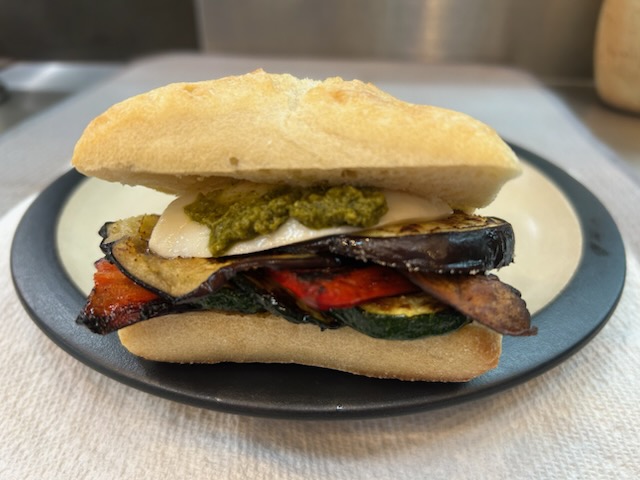by Chef Robert Bell
Many years ago, I asked one of my cooks, who was from Mexico, “What is the definition of a Taco? He answered, “Anything you fold into a tortilla.”
Following that reasoning, I thought, a sandwich is anything you put between two pieces of bread.
Sandwiches are central to American cuisine.
Each State has an official sandwich. California’s is the French Dip, New York’s is Pastrami and Rye, Wisconsin’s is Grilled Cheese, and Tennessee’s is The Elvis (peanut butter, bacon and bananas).
Start with the bread. Consider the thickness and density. Use it as it comes, toast it, grill or griddle the bread? Texture and flavor becomes part of the equation. Soft, crunchy, both, charred?
Some of the more interesting breads for sandwiches are biscuits, croissants, English muffins, pita and flatbreads. At times the bread plays the lead role, as in rye bread with corned beef, pastrami, or the patty melt. Think of the French roll for the submarine, torpedo, hoagie and ban mi.
How the fillings are placed between the bread is also important. Some sandwich makers like to pile the filling in the middle, which makes for a disappointing last bites. Each bite should be the same. Whether the fillings are layered flat or folded is your choice. There are times when the fillings should follow the rule “less is more.” Hot sandwich requires fewer ingredients. The grilled cheese, frankfurter, corned beef and pastrami are good examples.
Name them what you like — dressings, spreads, secret sauce or condiments — all sandwiches have them. I call them condiments. Entire grocery store aisles are dedicated to condiments, with offering from dressings and spreads, to onion jam, and wasabi mayonnaise.
Most sandwiches I remember growing up in Brooklyn did not have a condiment. The moisture came from lettuce or tomatoes. The exceptions were hot dogs and hamburgers, which were served with mustard and ketchup, respectively. You can compare a condiment to a sauce served on the protein part of your dinner plate. It can provide moisture, fat, acidity, sweetness or heat.
Accents are another way of adding moisture, crunch and flavor. The accent of avocado in a turkey sandwich can become the main attraction.
Other accents to consider are onion, sprouts, pickles, peppers, greens, radish, cucumber, olives and relishes. Be careful not to over power the sandwich with the accent. There are sandwiches, one specifically, the English tea sandwich, where the accent is the star, simply because there are only two ingredients — cucumber and smoked salmon, or the radish and butter.
A simple sandwich with only three ingredients may still present multiple options. Take the peanut butter and jelly as an example. Which bread is best? Should I toast it? Jelly, jam or a preserve? Crunchy or Smooth peanut butter? Should I try adding bacon or banana?
One of my favorite sandwiches is a BLT, with the addition of a couple of slices of smoked salmon and served on a fresh, plain, Noah’s bagel.
Two of my more recent favorites are roasted or grilled vegetables with halloumi or fresh mozzarella cheese, served on a ciabatta roll. The other is slowly roasted pork butt, refried beans, pickles, swiss cheese and mustard on a soft roll.
All this for a good picnic?











